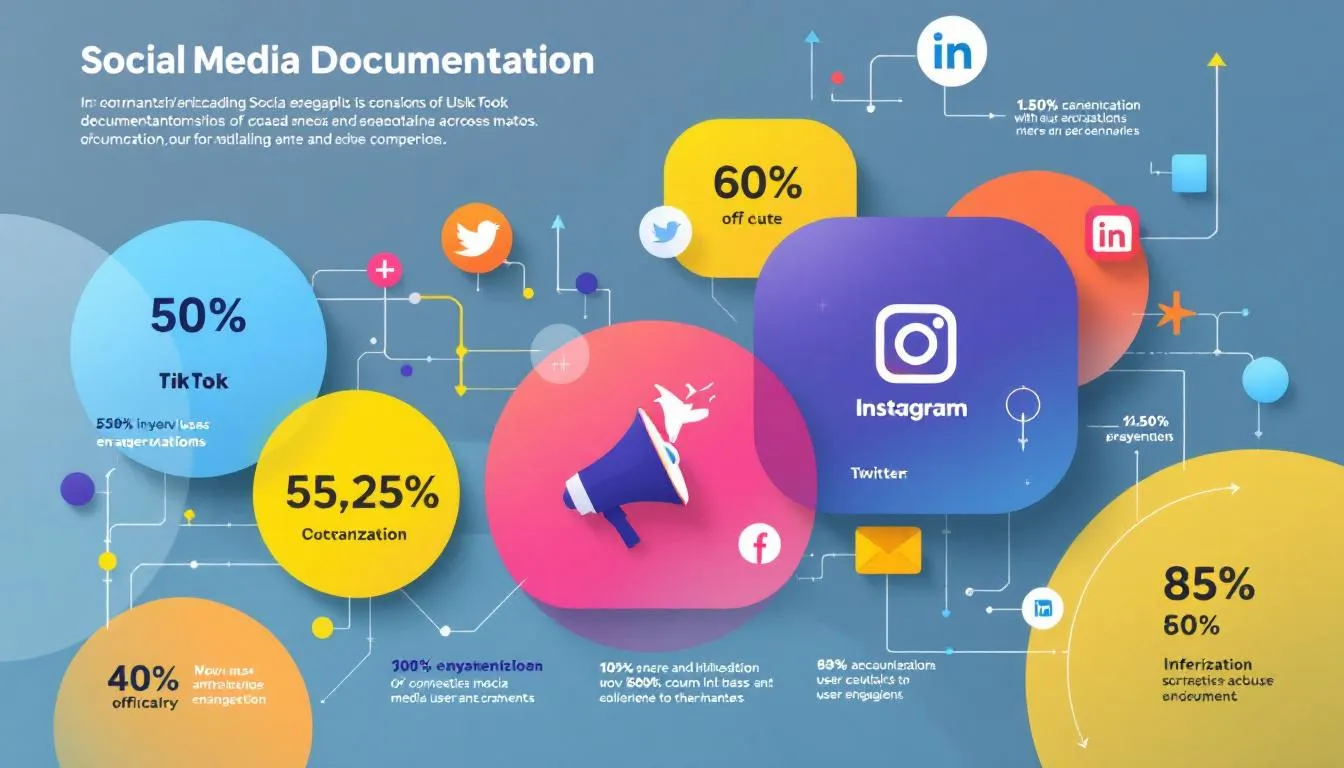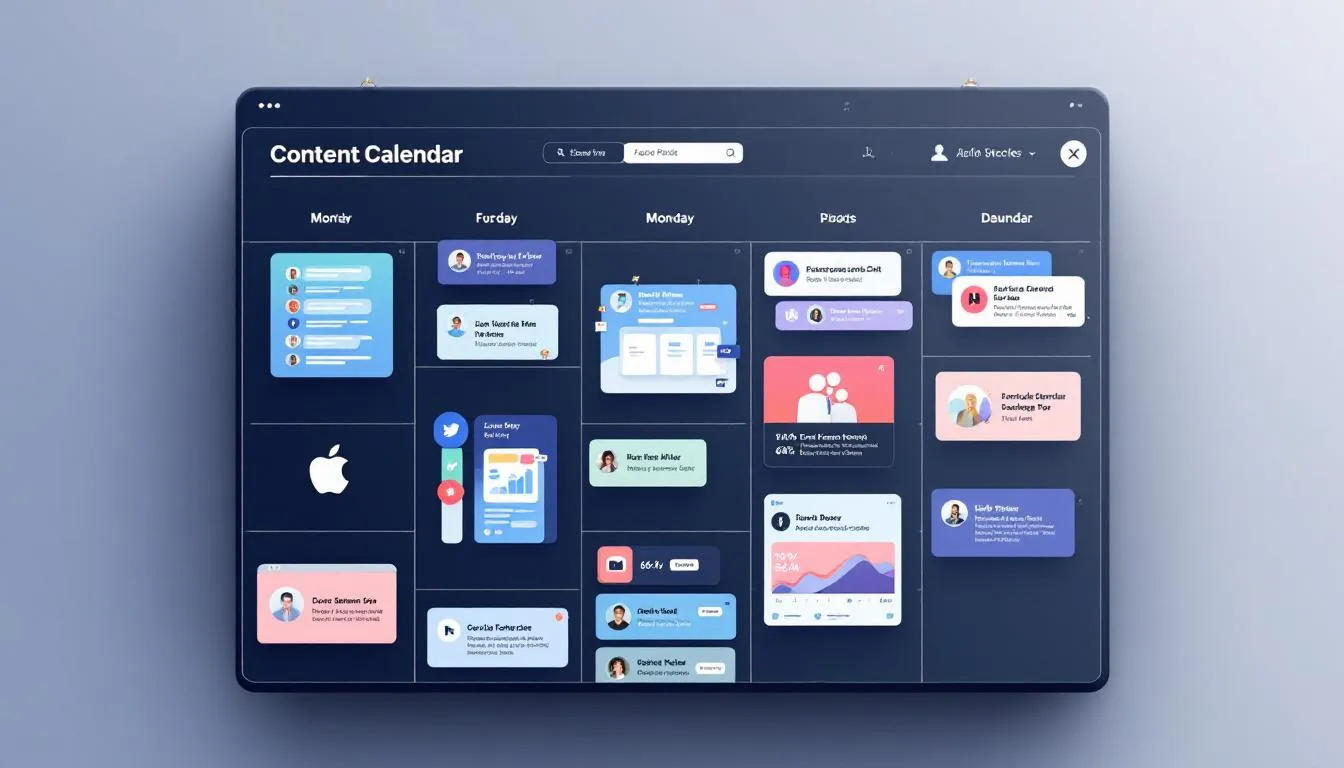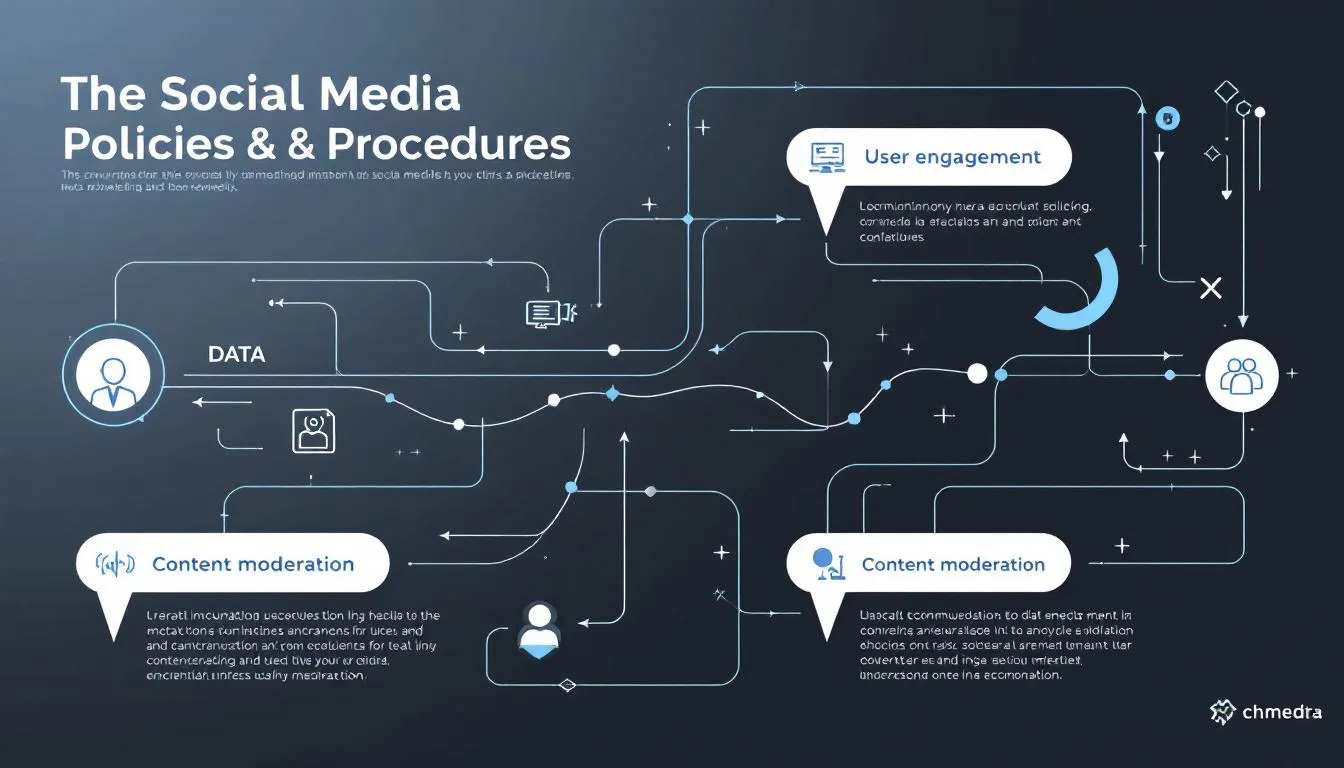Key Takeaways
- Establish clear social media guidelines to protect brand identity and maintain consistency across all platforms.
- Develop a robust content strategy and utilize analytics tools for thorough performance tracking and compliance with industry regulations.
- Encourage ongoing team collaboration and feedback to refine social media documentation and ensure it remains relevant and effective.
Importance of Social Media Documentation

Effective social media documentation includes defined roles, protocols, and a strategic overview tailored to brand needs. This foundation ensures your social media posts align with marketing goals and audience needs, providing a cohesive and impactful online presence.
A solid content strategy plan helps businesses define their target audience and align content types with overall business goals, ensuring posts reflect the brand’s goals and values.
Protecting Your Brand Identity
Clear social media guidelines are essential for protecting both brand integrity and employee actions. Comprehensive guidelines ensure employees’ social media posts do not undermine the brand’s reputation. Leading brands create detailed documentation to manage their online reputation and showcase their corporate values in every communication.
This approach maintains brand consistency and enhances audience engagement across various platforms.
Ensuring Compliance
Documenting social media guidelines addresses compliance requirements and ensures legal standards are met. The Federal Trade Commission (FTC) requires employees to disclose their identity when discussing company-related matters online, making guidelines on compensated posts essential for compliance.
Industries like healthcare and finance must adhere to specific federal regulations, necessitating current documentation to adapt to changing online environments and compliance demands.
Enhancing Team Collaboration
Effective social media documentation enhances collaboration by providing a shared understanding of content objectives among team members. Clear guidelines foster better teamwork by setting common expectations for online interactions. Employee input on social media guidelines enhances clarity, addresses confusion, and improves documentation practices.
This collaborative approach can encourage positive interactions among colleagues and promotes a unified online organization website presence through sharing, conversation, and message.
Key Elements of Effective Social Media Documentation

Documenting social media practices contributes to strategic coherence across all digital marketing efforts. Specialized tools can significantly enhance the efficiency and effectiveness of documentation, ensuring social media activities are well-organized and aligned with business goals.
Sectors like education, healthcare, and corporate contexts have tailored guidelines to address their unique needs. A well-structured content calendar streamlines approval workflows, ensuring timely reviews and minimizing bottlenecks.
Community Guidelines
Community guidelines are essential for fostering respectful and constructive interactions among users. These guidelines establish expected behavior and tone for user interactions on social media platforms, ensuring a respectful environment.
Outlining acceptable behavior and interaction protocols, community guidelines support a positive online communities.
Content Strategy Plan
A content strategy plan is crucial for ensuring organized and consistent social media posts. Periodic assessments of social media guidelines help organizations adapt to evolving trends and legal requirements, ensuring compliance and relevance.
Evaluations ensure compliance with evolving standards and industry practices, identifying outdated information and aligning with current digital trends.
Crisis Management Protocols
Having crisis management protocols in place enables organizations to swiftly address and mitigate negative incidents that may arise on social media. These protocols offer a framework for timely responses to negative comments or PR issues, including predefined responses and escalation paths.
Having different strategies in place allows businesses to effectively respond to and manage potential social media crises, making sense of the challenges they face.
Creating a Social Media Content Calendar

Platforms like Buffer and Hootsuite enable users to schedule posts across multiple social media channels at designated times. SocialBee is known for its AI-driven scheduling features that automate post management across various platforms. Social media management applications allow businesses to automate posting and track engagement metrics, ensuring consistent engagement without manual updates.
A content calendar is crucial for aligning social media posts with business goals and ensuring timely content distribution.
Planning Posts Ahead
Scheduling social media posts ahead of time ensures that content is timely and relevant to current audience interests. This approach reduces last-minute pressure and encourages creative thinking for content creation to publish.
Scheduling posts in advance saves time and allows teams to focus on creating high-quality content instead of scrambling for last-minute ideas.
Including Special Occasions
Incorporating holidays and relevant events into your content strategy allows for timely engagement with your audience. Strategically planned posts around special occasions enhance audience engagement and brand visibility, making your content more interesting each week.
Including holidays and company events in the content calendar allows brands to connect with audiences through relevant and timely messaging.
Tracking Performance
Tracking social media performance is crucial to understanding how well your content engages audiences and achieves business objectives. Analytics platforms help measure the effectiveness of social media strategies and document valuable insights.
These tools allow you to track key metrics like engagement rates, reach, and conversions, informing better decisions and refining future strategies to tool decide.
Documenting Social Media Policies and Procedures

A well-defined social media policy aligns employees’ online behavior with the company’s brand values, ensuring a unified public image. Social media documentation should articulate clear guidelines on tone, style, and frequency of posts.
In healthcare, policies emphasize patient confidentiality and compliance with regulations like HIPAA. Social media guidelines should address industry-specific regulations to ensure employees are aware of legal obligations related to their online conduct.
Continuous training keeps employees informed about new social media policies and best practices, fostering a safer online environment. Documenting social media practices protects companies by providing guidelines that minimize risks associated with posting content.
High-Level Dos and Don’ts
Social media guidelines instruct on representing the brand online. These guidelines are primarily for employees, outlining the dos and don’ts of social media conduct, for example, images and stories.
These guidelines promote positive and safe online behavior, offering a quick reference for essential dos and don’ts.
Disclosure and Transparency
Transparency in social media fosters audience trust and accountability. Intel’s policy addresses transparency and disclosure expectations for its social media participants. Many universities emphasize transparency and ethical conduct in their social media guidelines for staff and students.
Dell’s social media policy includes principles like legal compliance and responsible behavior, highlighting transparency.
Privacy and Confidentiality
Respect for privacy and confidentiality is essential across all social media platforms. Organizations must enforce the confidentiality of sensitive company information to protect their clients, even when employees are off duty.
Best Buy’s guidelines emphasize that employees’ online interactions, even beyond work hours, should protect the brand.
Tools for Efficient Social Media Documentation
Analytics tools allow marketers to measure engagement and effectiveness of social media posts, refining future strategies. Regular analysis of post performance metrics allows brands to refine content strategies based on audience engagement.
Monitoring social media post performance informs future content strategies, enhancing engagement and effectiveness.
Project Management Software
Tools like Trello and Asana are effective for managing social media projects and tracking tasks. Certain project management platforms allow teams to assign tasks related to social media, track progress, and manage deadlines effectively.
Project management tools significantly enhance the efficiency and effectiveness of social media task management.
Content Scheduling Tools
Content scheduling tools are essential for maintaining a consistent and timely social media presence. These tools automate posts, making it easier to manage multiple accounts and campaigns.
Project management software organizes and tracks scheduling tasks, ensuring all posts align with strategic goals. Effective use of scheduling tools enhances overall social media efficiency and helps brands respond quickly to changing trends and events.
Analytics Platforms
Analytics platforms:
- Measure the effectiveness of social media strategies, ensuring data-driven adjustments.
- Evaluate user engagement and campaign performance.
- Enable businesses to refine approaches based on concrete data.
Tools like Google Analytics and Sprout Social offer comprehensive analytics, uncovering insights into social media performance and audience engagement.
Examples of Social Media Documentation in Different Industries

Various industries use social media documentation to ensure effective communication and strategic alignment. In education, universities document social media guidelines for staff and students to navigate the digital landscape appropriately.
The healthcare industry emphasizes compliance and professionalism in social media documentation to uphold patient confidentiality and trust. Corporate brands document social media strategies and guidelines to maintain consistency and transparency across their messaging.
Education Sector
At the University of Northern Georgia, social media guidelines apply to both employees and students, ensuring comprehensive engagement standards. These guidelines emphasize transparency and disclosure, crucial for maintaining trust and integrity in online communications.
Clear social media guidelines foster accountability and responsible engagement among staff and students, promoting effective social media engagement and protecting the university’s brand identity and reputation.
Healthcare Industry
In healthcare, it is recommended to:
- Combine official and personal use policies in one location.
- Ensure social media guidelines are concise yet comprehensive, potentially only requiring a single page.
- Maintain patient privacy.
- Adhere to HIPAA rules.
Healthcare professionals must ensure their social media activities align with organizational principles and reflect adherence to ethical standards.
Corporate Brands
Corporate brands like Coca-Cola include specific social media guidelines tailored to different employee roles, including expectations for agency associates. Documenting social media strategies is essential for maintaining consistency and cohesiveness in a brand’s online presence.
Tailored guidelines ensure all employees understand their responsibilities and the brand’s voice, improving audience engagement and building customers trust. For expert guidance, Good Solutions tech at www.goodsolutions.tech offers tailored services to enhance your social media documentation and strategy.
Best Practices for Maintaining Up-to-Date Documentation
Maintaining social media channel documentation requires commitment, focus, and continuous writing for those who are interested in effective engage.
This section provides tips on keeping documentation current and relevant documents. Please note that it is essential to regularly review your materials.
Regular Reviews and Updates
To maintain effective social media documentation:
- Conduct regular reviews to ensure documentation is up-to-date with new trends and regulations.
- Provide ongoing employee training to keep the team informed about the latest social media guidelines and best practices.
- Collect team feedback to help improve and refine social media documentation to better meet current needs.
For expert assistance, consider Good Solutions tech at www.goodsolutions.tech, which offers comprehensive services to explain maintaining and updating documentation.
Employee Training
Ongoing training keeps employees informed about the latest social media guidelines and best practices. Regularly reviewing and updating training materials ensures they reflect current social media trends and regulations. Collecting employee feedback refines and enhances social media training sessions, making them more effective.
Good Solutions tech provides professional training services to keep your team current with industry standards.
Gathering Feedback
Team feedback helps address questions or concerns and improve social media documentation. Incorporating team input leads to more helpful and effective social media practices.
Best practices for collecting feedback include creating a structured process for employees to provide input. Engaging with a professional service like Good Solutions tech can further streamline this process, ensuring your documentation meets the highest standards.
Summary
Mastering social media documentation is essential for protecting your brand identity, ensuring compliance, and enhancing team collaboration. By incorporating key elements like community guidelines, content strategy plans, and crisis management protocols, businesses can create a robust framework for their social media efforts. Utilizing tools for efficient documentation and regularly updating policies and procedures ensures relevance and effectiveness. By following best practices and seeking expert guidance from services like Good Solutions tech, you can maintain up-to-date documentation that fosters a strong, cohesive, and engaging online presence. Let’s take the first step towards mastering social media documentation and watch your brand thrive in the digital landscape.
Frequently Asked Questions
Why is social media documentation important for my business?
Social media documentation is essential for safeguarding your brand’s identity and ensuring that your team works in sync. By keeping detailed records, you pave the way for stronger collaboration and compliance, ultimately driving your business forward!
What are the key elements of effective social media documentation?
Effective social media documentation hinges on well-defined community guidelines, a clear content strategy, and robust crisis management protocols. These elements empower you to engage confidently and navigate challenges successfully!
How can I create a social media content calendar?
Creating a social media content calendar is easy with tools like Buffer or Hootsuite to schedule your posts and plan for special occasions. Take charge of your social media strategy and start engaging your audience consistently!
What should be included in social media policies and procedures?
Your social media policies should clearly outline the dos and don’ts, ensure transparency and disclosure, and address privacy and confidentiality. This clarity will empower your team to engage effectively and responsibly online!
How can I keep my social media documentation up-to-date?
To keep your social media documentation up-to-date, regularly review and update your content, provide ongoing training for your team, and gather their feedback. Stay proactive, and you’ll ensure your documentation remains relevant and effective!
#SocialMediaDocumentation #SocialMediaGuidelines #Compliance #BrandIdentity #TeamCollaboration #ContentStrategy #CrisisManagement #CommunityGuidelines #ContentCalendar #PostScheduling #SocialMediaAnalytics #SocialMediaPolicies #Transparency #Privacy #Confidentiality #ProjectManagement #SchedulingTools #AnalyticsPlatforms #EducationSector #HealthcareCompliance #CorporateBrands #DocumentationUpdates #EmployeeTraining #Feedback #GoodSolutionsTech
